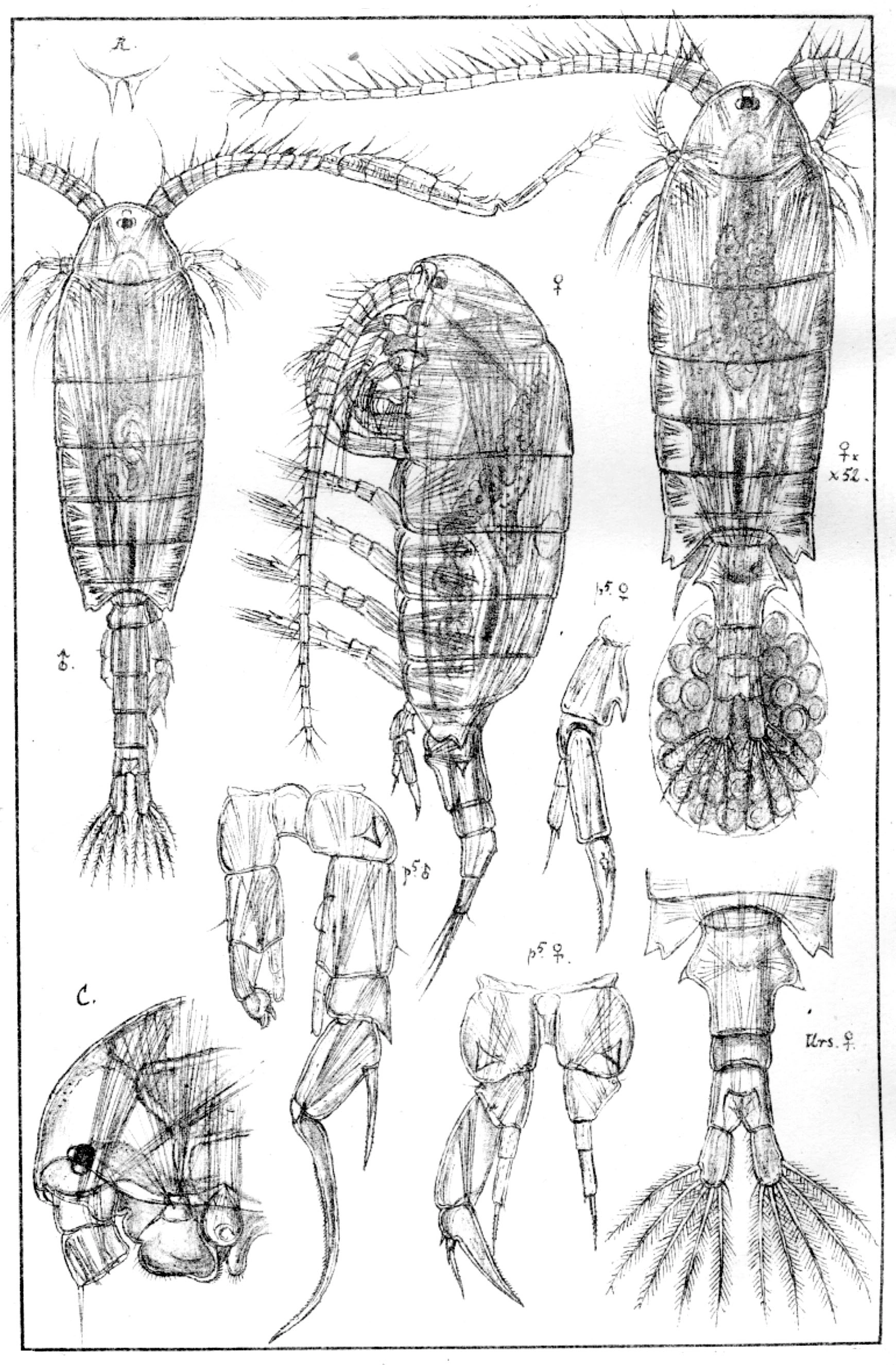Diaptomus castor
Diaptomus castor is the largest among diaptomid species in Norway. It is only recorded in a few sites in the vicinity of Oslo, but since it is a winter form with diapause in summer, it may have been overlooked and be more common.
Key characteristics
Diaptomus castor (female)
Diaptomus castor is the largest among diaptomid species in Norway, and has a somewhat robust form. The antennae are short, reaching slightly beyond the last thorax segment. The furca is short, and the two branches are about twice as long as they are broad. The inner ramus of the last pair of legs (p5) carries two slender and elongated spines on the tip, which is a character that separates this species from other calanoids. The female is generally yellowish or orange, the male more reddish.
Female: Length 1.8–3.7 mm
Male: Length smaller
Ecology and distribution
G.O. Sars found D. castor in four small ponds, three located in the south and one in Nordland County (not shown in the map). Later the species has only been found three times. One of these records was in a constructed wetland just west of Oslo where two adult specimens were found, respectively one male and one female. They occurred in early May and though the pond has been sampled twice a month for the following three years, no more individuals have been found. D. castor is a winter form with diapause in summer, and therefore it has only been common in early spring and late autumn. The actual ponds are characterized by high levels of phosphorus and nitrogen.
| Vitenskapelig navn | < 4,5 | 4,5 - 4,9 | 5,0 - 5,4 | 5,5 - 5,9 | 6,0 - 6,4 | 6,5 - 7,0 | 7,0 - 7,4 | > 7,5 |
|---|---|---|---|---|---|---|---|---|
| 0 | 0 | 0 | 0 | 0 | 0 | 0 | 0 |
| Vitenskapelig navn | < 1,0 | 1,0 - 1,4 | 1,5 - 1,9 | 2,0 - 2,9 | 3,0 - 3,9 | 4,0 - 4,9 | 5,0 - 6,9 | 7,0 - 9,9 | > 10,0 |
|---|---|---|---|---|---|---|---|---|---|
| 0 | 0 | 0 | 0 | 0 | 0 | 0 | 0 | 0 |
| Vitenskapelig navn | < 0,01 | 0,01 - 0,09 | 0,1 - 0,9 | 1,0 - 9,9 | 10,0 - 99 | 100 - 999 | > 1000 |
|---|---|---|---|---|---|---|---|
| 0 | 0,5 | 0 | 0 | 0 | 0 | 0 |
| Vitenskapelig navn | < 100 | 100-299 | 300-499 | 500-699 | 700-999 | >1000 |
|---|---|---|---|---|---|---|
| 0 | 0,1 | 0 | 0 | 0 | 0 |

